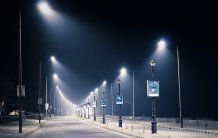Articles

More and more of the planet is lit at night
Lighting revolution may increase light pollution
A study of pictures of Earth by night has revealed that artificial light is growing brighter and more extensive every year.
Between 2012 and 2016, the amount of the planet artificially lit at night grew by more than 2% per year, according to research by the GFZ German Research Centre for Geoscience and the University of Exeter.
The benefits of switching to LED lights, which use less energy than conventional lighting, could be lost if – instead of using less energy to maintain lighting levels – people use the cost savings to pay for extra lighting.
Scientists fear this "rebound effect" might partially or totally cancel out the savings of individual lighting retrofit projects, and make skies over cities considerably brighter.
“The great hope was that LED lighting would lead to lower energy usage, but what we’re seeing is those savings being used for increased lighting,” said Professor Kevin Gaston, of the Environment and Sustainability Institute on the University of Exeter’s Penryn Campus in Cornwall.
“We’re not just seeing this in developing countries, but also in developed countries. For example, Britain is getting brighter.
"You now struggle to find anywhere in Europe with a natural night sky – without that skyglow we're all familiar with."
The scientists used data from the first-ever calibrated satellite radiometer designed especially for nightlights (VIIRS for Visible/Infrared Imager Radiometer Suite).
The VIIRS Day-Night Band is mounted on the NOAA satellite Suomi–NPP and has been circling our planet since October 2011.
Globally, the increase in light emission closely corresponds to the increase of the Gross Domestic Product (GDP), with the fastest growth occurring in developing countries.
There is, however, hope that things will change for the better.
“Other studies and the experience of cities like Tucson, Arizona, show that well designed LED lamps allow a two-third or more decrease of light emission without any noticeable effect for human perception,” said lead researcher Dr Christopher Kyba, whose research is done both at GFZ and the Leibniz Institute for Freshwater Ecology and Fisheries IGB.
Dr Kyba’s earlier work has shown that the light emission per capita in the United States of America is three to five times higher than that in Germany.
He sees this as a sign that prosperity, safety and security can be achieved with conservative light use.
“There is a potential for the solid state lighting revolution to save energy and reduce light pollution, but only if we don’t spend the savings on new light,” he added.
The paper, published in the journal in Science Advances, is entitled: “Artificially lit surface of Earth at night increasing in radiance and extent.”
Date: 23 November 2017
